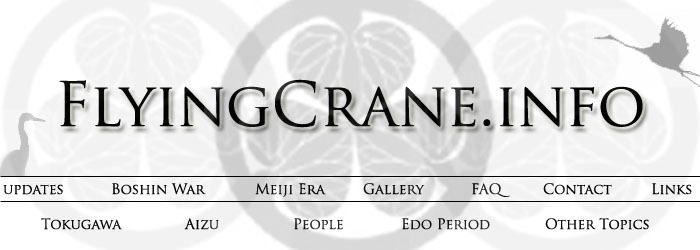

| ::EDO ERA :: This page is a work in progress. Check back soon! The Tokugawa ShogunateThe Tokugawa Shogunate arose after over a century of bloodshed and uncertainty in Japan. The preceding period, known as the Sengoku-jidai, or "Age of the Warring States," and as such, it was initially conceived as a military government-- one that maintained peace through the presence of arms. Though the Shogunate was to go to great lengths to legitimate its existence and develop the ceremony and structure of a civil government, at its core it was to remain, at least in theory, founded on a "martial" (though not necessarily warring) structure.The seniormost offices of the Shogunate included the following:
Machi-bugyo (City Magistrate): Post held by either a fudai daimyo or a hatamoto. This post was one which had oversight of the commoner wards of the major cities under the Shogun's control, including Edo, Kyoto, Nagasaki, Nara, Hakodate, Niigata, and others. Kanjo-bugyo (Finance Magistrate): Drawn from the ranks of the hatamoto, the kanjo-bugyo oversaw matters of finance and taxation for the Tokugawa government. Kinzan-bugyo (Mining Magistrate): Drawn from the ranks of the hatamoto, the Kinzan-bugyo oversaw the operations of the Shogunate's private mines.
|